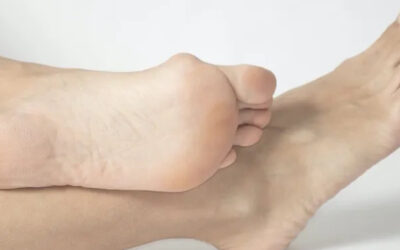What is Hammer Toe?
Hammer toe is a deformity in which one or more of the smaller toes (typically the second, third, or fourth) become bent at the middle joint, causing the toe to curl downward. The condition occurs when there is an imbalance in the muscles, tendons, or ligaments that hold the toe straight. Over time, the abnormal bend can become fixed, making it difficult or painful to straighten the toe. Hammer toe is often associated with:
- Ill-fitting shoes: Shoes that are too tight or have high heels can push toes into an abnormal position.
- Genetics: Some people are more prone to developing hammer toe due to inherited foot structures.
- Injury: Trauma to the toe can increase the risk of developing hammer toe.
- Underlying health conditions: Certain medical conditions, such as arthritis or diabetes, can increase the risk of foot deformities.

Symptoms of Hammer Toe
The most common symptoms of hammer toe include:
- Visible bending of the toe: A noticeable downward bend at the middle joint.
- Pain or discomfort: Pain when walking or wearing shoes, especially in the affected toe.
- Corns and calluses: Due to the toe rubbing against footwear, corns and calluses may form on the top of the joint or the tip of the toe.
- Swelling or redness: Inflammation may occur, especially if the condition progresses without treatment.
- Difficulty moving the toe: In advanced cases, the toe may become rigid and difficult to move.
Treatment Options for Hammer Toe
At Capital Foot Care, we offer both conservative and surgical treatment options to correct hammer toe based on the severity of the condition. Our team of podiatrists will assess your specific case and develop a personalized treatment plan.
-
- Conservative Treatments
For individuals with mild or flexible hammer toe, non-invasive treatments may help alleviate symptoms and prevent the condition from worsening. These options include:
-
-
- Proper Footwear: Wearing shoes with a wide toe box and low heels can reduce pressure on the toes and prevent further deformity. Avoid tight, narrow shoes that crowd the toes.
- Padding and Cushioning: Corn pads or cushions can be placed around the affected area to relieve pressure and prevent corns or calluses from forming.
- Orthotics: Custom orthotic inserts can help realign the toes and provide support, improving overall foot function.
- Toe Exercises: Stretching and strengthening exercises may help improve flexibility and correct muscle imbalances that contribute to hammer toe.
- Splints or Straps: In some cases, splints or straps may be used to hold the toe in a straightened position.
-

- Surgical Treatments
When hammer toe becomes fixed or causes significant pain, surgical intervention may be necessary. Surgery is generally recommended for more severe cases where conservative treatments have failed to provide relief. Common surgical options include:
- Tendon Transfer: This procedure involves repositioning tendons to help straighten the toe. It is typically performed for flexible hammer toes.
- Joint Resection: For fixed hammer toes, the surgeon may remove part of the joint to allow the toe to straighten.
- Fusion: In more advanced cases, fusion surgery may be performed to remove part of the bone and fuse the joint, permanently straightening the toe.

At Capital Foot Care, our skilled surgeons use the latest techniques to ensure optimal results and a speedy recovery.
Preventing Hammer Toe
While some factors contributing to hammer toe may be beyond your control, such as genetics, there are steps you can take to prevent the condition from developing or worsening:
- Choose Proper Footwear: Always wear shoes that fit well and provide plenty of room for your toes.
- Stretch Your Toes: Regularly perform toe stretches and exercises to maintain flexibility and strength.
- Monitor Your Foot Health: If you notice any changes in your toes or experience discomfort, consult a podiatrist right away to address the issue before it progresses.
Trust Capital Foot Care for Expert Hammer Toe Correction
At Capital Foot Care, we specialize in the diagnosis and treatment of hammer toe and other foot conditions. Whether you require conservative treatments or surgical intervention, our expert podiatrists are committed to helping you find relief and restoring proper foot function. We take a personalized approach to care, ensuring that each patient receives the treatment plan best suited to their unique needs.

Hammer toe can be a painful and uncomfortable condition, but with early intervention and proper treatment, it can be effectively managed. At Capital Foot Care, our team of skilled podiatrists—Dr. Muhammad A. Khalid, Dr. Fritz-Andre Duterlein, and Dr. Herman Zarate—is here to guide you through the correction process, ensuring that you receive the highest quality care and experience relief from your symptoms. Contact us today to learn more about hammer toe correction and start your journey to healthier feet.










